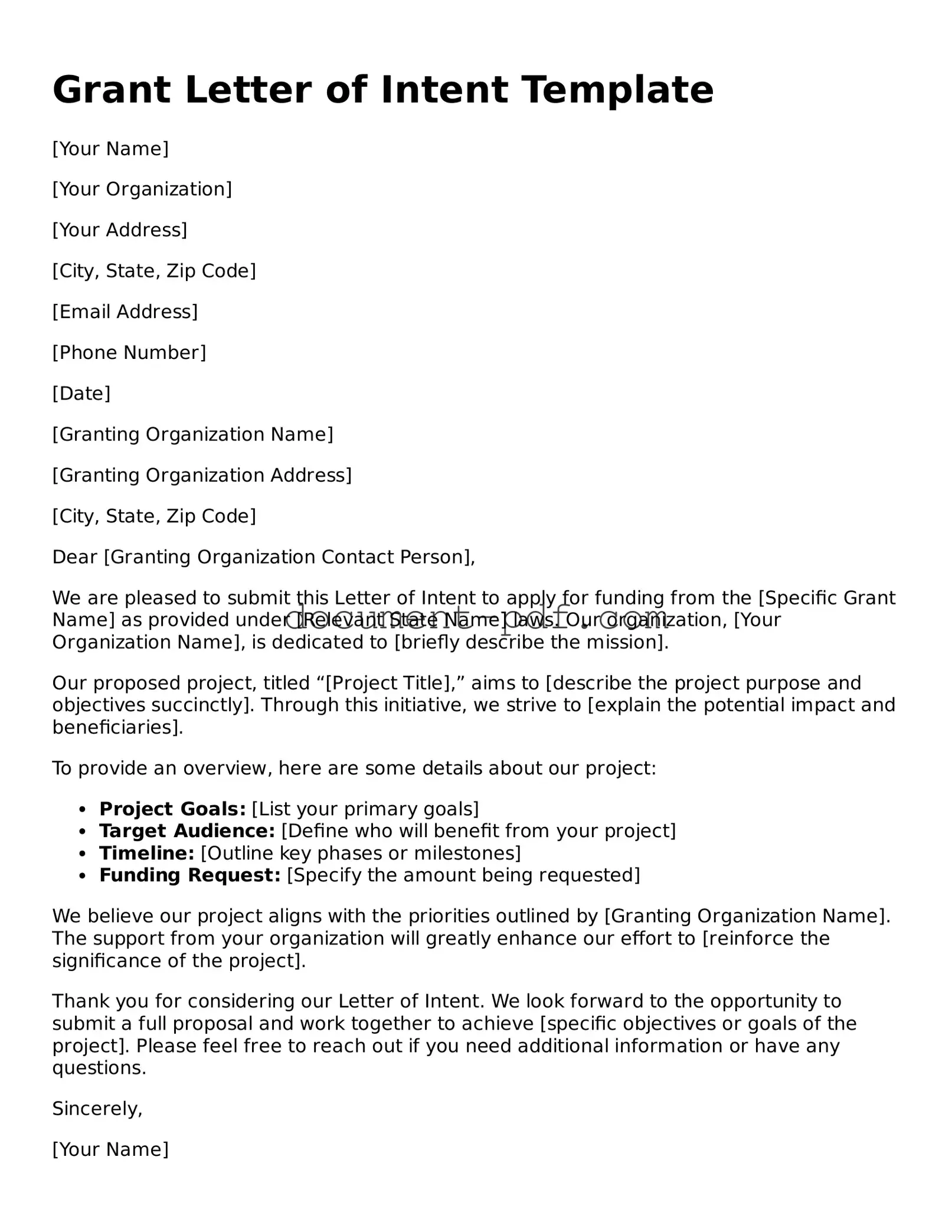The Grant Application is a formal request for funding submitted to a grant-making organization. Like the Grant Letter of Intent, it outlines the project's objectives, budget, and timeline. However, the application is typically more detailed, requiring comprehensive information about the project's impact, methodology, and the organization’s qualifications. Both documents serve as a means to communicate the project's potential, but the application is a deeper dive into the specifics.
A Proposal is another document that shares similarities with the Grant Letter of Intent. Proposals often detail the project plan, including goals, strategies, and expected outcomes. While a Letter of Intent may serve as a preliminary step to gauge interest, a proposal is a full-fledged document aimed at securing funding. Both require clarity and persuasiveness to convince funders of the project's value.
The Memorandum of Understanding (MOU) outlines an agreement between parties regarding collaboration on a project. Similar to the Grant Letter of Intent, an MOU sets the stage for future actions and commitments. However, an MOU is more focused on the roles and responsibilities of each party rather than seeking funding. Both documents aim to clarify intentions and expectations, fostering a cooperative relationship.
An Executive Summary condenses the key points of a larger document, such as a grant proposal. Like the Grant Letter of Intent, it aims to capture the reader’s attention and provide a quick overview of the project. While the Letter of Intent is often a preliminary communication, the Executive Summary is typically part of a more extensive application process, summarizing the essential elements for quick reference.
A Concept Paper is a brief document that outlines an idea for a project, similar to the Grant Letter of Intent. It presents the project's purpose, significance, and potential impact in a concise format. Both documents are often used as initial communications to gauge interest from funders, but the Concept Paper may focus more on the idea itself rather than the specifics of funding requests.
A Business Plan details the strategy for a business or project, much like the Grant Letter of Intent outlines a project proposal. Both documents require a clear articulation of goals and plans for achieving them. However, a business plan typically includes financial projections and market analysis, whereas a Letter of Intent is more focused on securing initial interest from funders.
A Funding Proposal is specifically designed to request financial support, similar to the Grant Letter of Intent. Both documents aim to persuade funders of the project's merit. However, a Funding Proposal usually includes more detailed financial information and is submitted after initial interest has been established through a Letter of Intent.
A Research Proposal outlines a plan for conducting research, similar to how a Grant Letter of Intent outlines a project. Both documents require clarity and precision to communicate objectives and methodologies effectively. However, a Research Proposal often includes detailed research questions, methods, and expected outcomes, focusing specifically on the research aspect rather than broader project goals.
In the context of homeschooling in Alaska, it is important for parents to understand that submitting the Homeschool Letter of Intent is a vital step in the process. This document serves as a formal notification to the state, ensuring that families are compliant with local regulations while outlining their educational plans. By completing this requirement, parents can establish their commitment to providing quality education at home, setting a solid foundation for their homeschooling journey.
A Letter of Inquiry serves as a preliminary communication to funders, akin to a Grant Letter of Intent. It briefly describes the project and seeks to determine the funder's interest before submitting a full proposal. Both documents aim to establish a connection and set the stage for further discussions, but a Letter of Inquiry is generally less formal and less detailed than a Letter of Intent.
